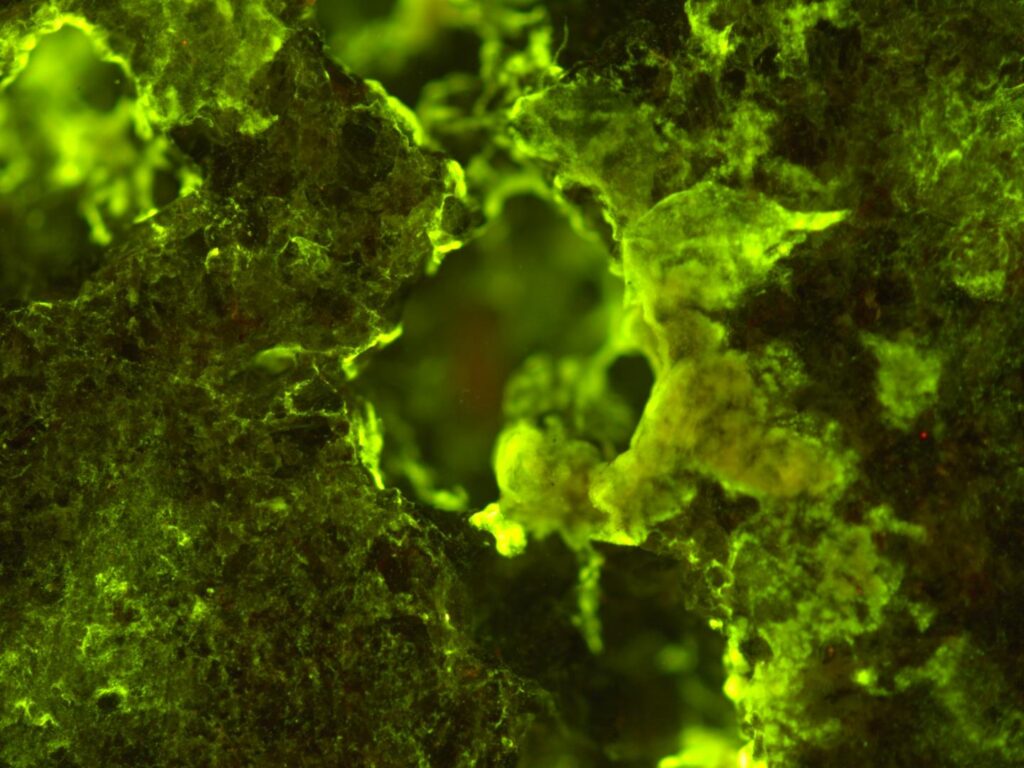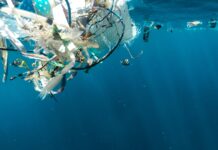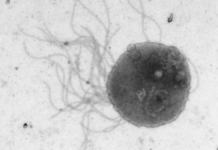Robots inhabiting the Moon and Mars are paving the way for human exploration and settlement. What is the next step? Astronauts will need helpers for building and maintaining the extraterrestrial colonies. In a press release issued earlier this month, the European Space Agency unveiled its plan to send to Mars and the Moon the tiniest workforce on Earth: bacteria.
Even before the onset of civilization, our living standards have always been highly dependent on mining. And that won’t be different on any other planet we are planning to colonize.
But space exploration is expensive, delicate, and physically challenging. Every pound, every cubic inch is carefully calculated on each space rocket for successful launching. Materials and traditional machinery for mining are way too big and bulky.
Rock-eating microbes
To achieve sustainability on other planets like our neighbor Mars, settlers will need to use local resources. And here is where bacteria become a space asset: scientists want to use biominers, which are microbes that literally eat rocks.
On Earth, biominers naturally inhabit rocks that come from volcanoes called igneous. Mining companies have been hiring these singular creatures to extract metals like copper, cobalt, zinc, nickel, gold, uranium, and rare metals found in low concentrations in minerals. To identify rare metals in the periodic table, we look for the line starting with La: Lanthanum, until Lu: Lutetium.

According to the American Geosciences Institute, ten to fifteen per cent of the copper in Chile (the world’s largest copper producer country) is extracted using biominers. Worldwide, five per cent of the gold is removed this way.
Biomining in the space
How do experts know these microscopic collaborators will survive and work properly in the Moon or Mars’s harsh environment? European Space Agency BioRock experiments performed at the International Space Station (ISS) show promising results on the subject.
In a study published at Frontiers in Microbiology, scientists compared the growth of three different species of biominers: Sphingomonas desiccabilis, Bacillus subtilis, and Cupriavidus metallidurans —subject to three different gravitational conditions: natural microgravity at ISS, simulated Mars gravity, and simulated Earth gravity — and control on Earth during twenty-one days.
Microgravity is gravity very close to zero, which is what astronauts feel at the ISS constantly. Gravity on Mars is one-third the gravity on Earth.
Rosa Santomartino and collaborators of the BioRock experiment found no significant differences in any of the three bacteria species growth between the three gravity situations. These results suggest that biominers can live in space and other planets at any gravity less than the Earth.
In another BioRock experiment at ISS, astronauts feed bacteria with their favourite igneous rock. This time, the idea was to test if the tiny miners are capable of extracting rare earth metals in all three gravity regimes. The process is called bioleaching, which consists of the breakdown, by microbes, of metal sulfite compounds present in the mineral, extracting the precious elements.

Image Credit: Nature Communications

Scientists observed the same efficacy for mining in simulated Mars gravity and microgravity as on Earth for the Cupriavidus metallidurans. In contrast, the Bacillus subtilis appears a little bit lazy to do the job. The big surprise was the Sphingomonas desiccabilis, which broke down rare metals better than non-biological controls in all gravity conditions.
These results were recently published in Nature Communications, where the authors remarked, “These data demonstrate the potential for space biomining and the principles of a reactor to advance human industry and mining beyond Earth.”
Biominers to the rescue
Humans on Earth are heavily dependent on electronics. On Mars, it will likely be no different: new colonies will require instruments like GPS, computers, and communications equipment. Electronics have a limited life span. They are susceptible to radiation damage, and as technology advances, components will need to be replaced and updated on-site.
Metals, mostly rare earth metals, will be essential to have them extracted on the Moon and Mars: they have unique physical and chemical properties for state-of-the-art instruments. Luckily, biominers are here for the rescue, showing potential to help the future human Martians “to science the heck out of” local resources.
Sources:
- European Space Agency press release. (12th of November, 2020). Building an extraterrestrial habitat – one microbe at a time.
- Santomartino, R. et al. (2020). No Effect of Microgravity and Simulated Mars Gravity on Final Bacterial Cell Concentrations on the International Space Station: Applications to Space Bioproduction. Frontiers in Microbiology 11: 2414. DOI:10.3389/fmicb.2020.579156.
- Cockell, C.S., Santomartino, R., Finster, K. et al. (2020). Space station biomining experiment demonstrates rare earth element extraction in microgravity and Mars gravity. Nature Communications 11, 5523. DOI:10.1038/s41467-020-19276-w.
- Evans, J. (2014). Microbial miners. Chemistry world. Royal Society of Chemistry.
Image Credit: UK Centre for Astrobiology/University of Edinburgh





